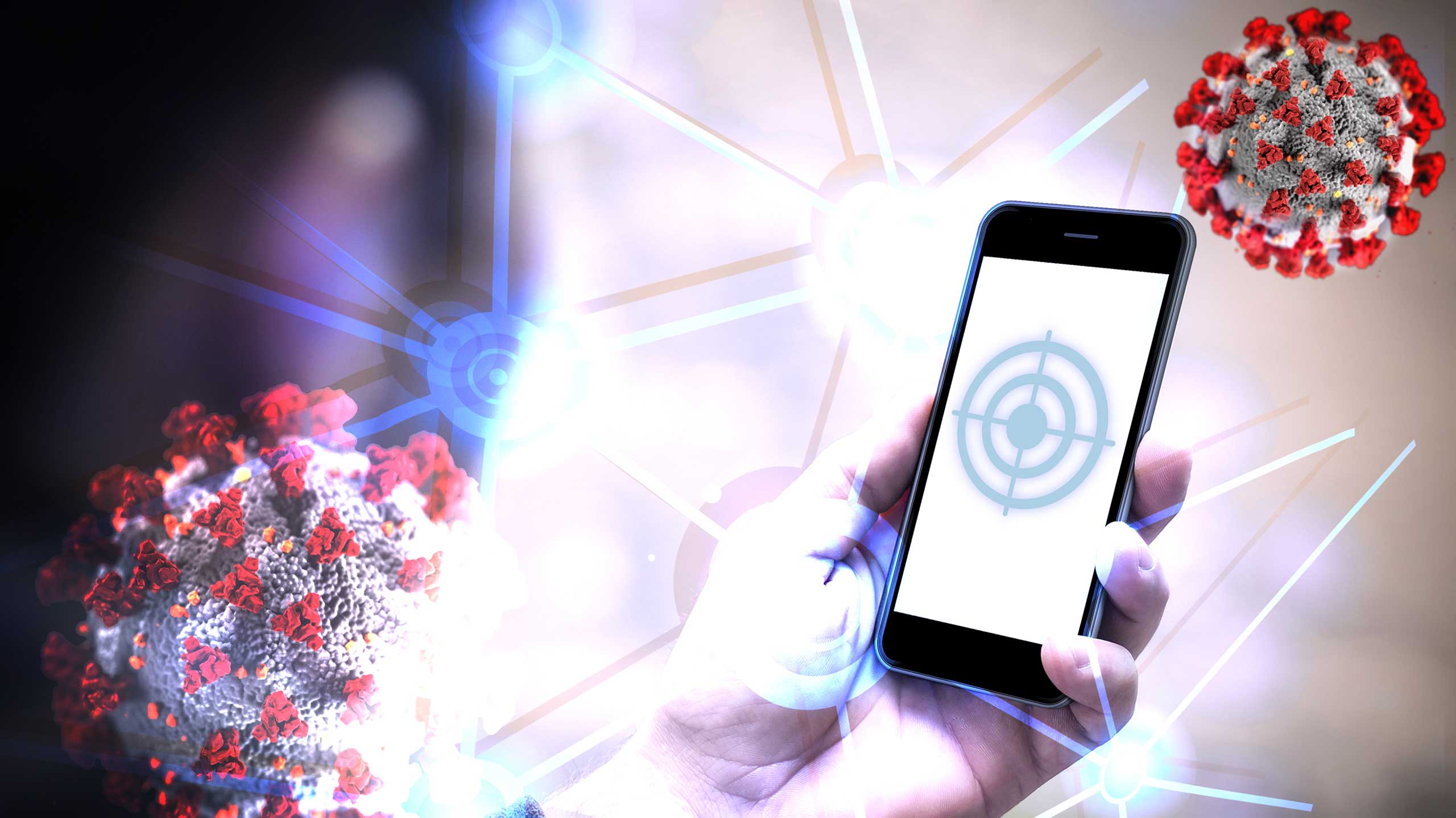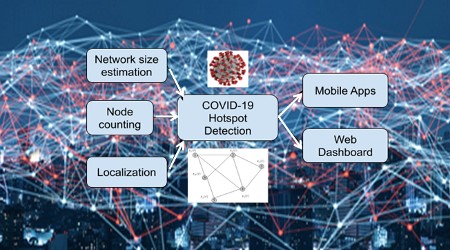
Keeping our communities safe one smartphone app at a time
ASU researchers collaborate with Clarkson University peers on COVID-19 hotspot detection algorithm

Above: COVID-19 hotspot notifications could soon appear on your mobile device thanks to an NSF RAPID grant for researchers at Arizona State University and Clarkson University. Photo courtesy of Shutterstock
We are all learning new ways to navigate the world in the age of COVID-19. Just deciding to leave home for essential needs has become a more thoughtful and planned process. As many head out with face coverings and hand sanitizer, they have no idea if they are walking straight into a viral hotspot.
A group of researchers from Arizona State University and Clarkson University are collaborating to empower communities with this knowledge.
Andreas Spanias, a professor of electrical engineering, and Cihan Tepedelenlioglu, an associate professor, both in the School of Electrical, Computer and Energy Engineering, one of the six schools in the Ira A. Fulton Schools of Engineering, are the main researchers from ASU. The pair are collaborating with project lead Mahesh Banavar, an associate professor at Clarkson University, and Stephanie Schuckers, a professor and center director at Clarkson University.
The dual-university team plans to use data collected from cell phone towers, WiFi and Bluetooth traces and a specialized algorithm to help detect potential COVID-19 hotspots. The algorithm will then alert users of potential dangers.
Spanias and Tepedelenlioglu are colleagues in the Sensor Signal and Information Processing Center at ASU, also called SenSIP. At the center, which Spanias directs, they have been working on sensor technologies that incorporate node counting and network size estimation using consensus-based methods. These patented methods have several applications, including cell phone network area estimation.
Similarly, their counterparts at Clarkson University have been developing signal localization software platforms. The collaboration brings together the capabilities of two Industry University Cooperative Research Centers (I/UCRC), namely SenSIP and the Center for Identification Technology Research (CITeR) at Clarkson University.
The National Science Foundation awarded the inter-university team close to $200,000 for a Rapid Research Response, also known as a RAPID grant. The NSF awards RAPID grants to projects deemed urgent, including quick-response research on natural disasters or unanticipated events like the COVID-19 pandemic.
The COVID-19 Hotspot Network Size and Node Counting using Consensus Estimation project will use advanced consensus-based methods to estimate a network area and the number of smartphones in that area using minimal network data. Studies show that COVID-19 can spread in places where many people are congregated in close proximity. Using the assumption that several app-connected smartphones in a given area corresponds to more people gathering, the algorithm can help assess the increased potential for viral spread.
In practical terms, an application on a user’s phone will estimate location, using traces such as WiFi, Bluetooth and cell-tower data, and also evaluate other non-personal information to determine if certain areas have a large number of people in close proximity. Nearby users will be lumped together to form an ad hoc network, allowing the algorithm to limit data collection from devices in this specific user group.

Photo above illustrates how network size estimation, node counting and localization factors are analyzed to determine a COVID-19 hotspot. Data are then sent to the mobile app and the web dashboard notifying users of possible dangers. Image courtesy of Andreas Spanias.
Other users in the same network who are also running the mobile application will transmit similar data to the algorithm, which will refine the estimates of network size, number of users in the area covered by the network and network location. With this information, the app would send an alert to a smartphone user who is about to enter a densely populated risk area.
Consumers are becoming increasingly wary about access to their personal data, so the research team has user privacy at the forefront of this project. Each user will choose how much data they transmit in a tier-based system.
For one set of users, only basic location information is gleaned from a ping on a cell tower or open Bluetooth and WiFi access points, letting the algorithm know approximately where they are without using GPS. Other users can give more permissions to allow mild sharing of some additional information, including precise location but not the user’s identity or personal information. Obtaining more data will improve the algorithm performance and provide refined location and network information.
Spanias and the team hope to have the algorithm in the testing phase by January 2021. When rolled out to the public, the application will be available for any smartphone type. The data parsed by the algorithm will also be available on the web.
Implications for the ASU-Clarkson University team’s solution go far beyond the user level. Businesses in or nearby hot zones will be able to use the technology to decide when and how it is safe to open. Beyond COVID-19, communities and relief agencies can use the data from the algorithm during natural disasters to determine where to send resources.
While nothing short of a cure or a vaccine for COVID-19 will subdue some people’s concern about the virus, rapid response research like this innovative effort may offer peace-of-mind by providing smartphone users information about highly populated areas.



































